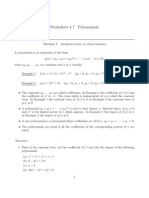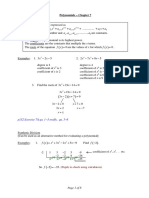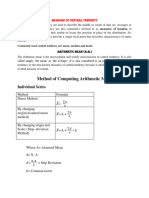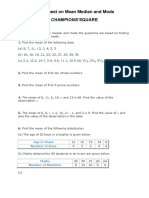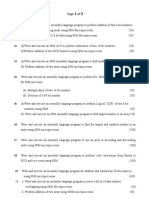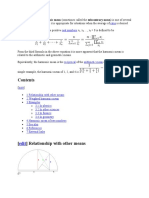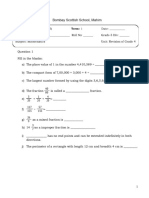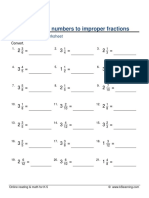0% found this document useful (0 votes)
12 views11 pagesPolynomials & Rational Functions
The document provides a comprehensive overview of polynomials and rational functions, including definitions, properties, and methods for division, such as long division and synthetic division. It discusses theorems related to polynomials, including the Remainder Theorem, Factor Theorem, and Fundamental Theorem of Algebra, as well as the Intermediate Value Theorem. Additionally, it covers the graphical behavior of polynomials, including end behavior, domain, range, monotonicity, and extrema.
Uploaded by
Murilo FujiiCopyright
© © All Rights Reserved
We take content rights seriously. If you suspect this is your content, claim it here.
Available Formats
Download as PDF, TXT or read online on Scribd
0% found this document useful (0 votes)
12 views11 pagesPolynomials & Rational Functions
The document provides a comprehensive overview of polynomials and rational functions, including definitions, properties, and methods for division, such as long division and synthetic division. It discusses theorems related to polynomials, including the Remainder Theorem, Factor Theorem, and Fundamental Theorem of Algebra, as well as the Intermediate Value Theorem. Additionally, it covers the graphical behavior of polynomials, including end behavior, domain, range, monotonicity, and extrema.
Uploaded by
Murilo FujiiCopyright
© © All Rights Reserved
We take content rights seriously. If you suspect this is your content, claim it here.
Available Formats
Download as PDF, TXT or read online on Scribd
/ 11















